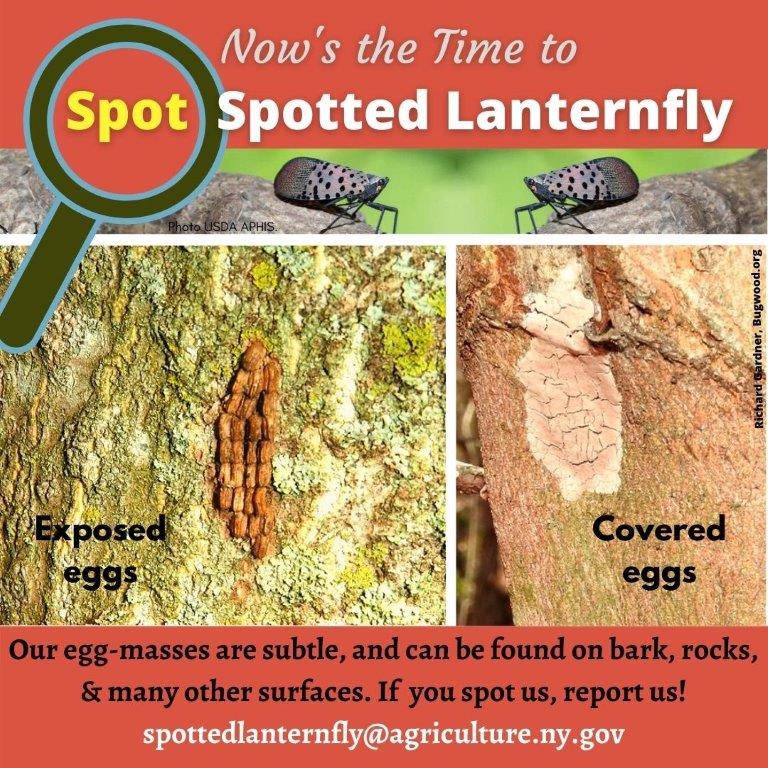This article was featured in the 2022 Winter Newsletter by Brian Eshenaur-NYS IPM.
Be on the lookout! Unfortunately, spotted lanternfly’s range in NYS has expanded over the last year so it’s more important than ever to keep a close eye out for this invasive insect.
It can be a nuisance in home and municipal landscapes where large numbers may gather on trees like maple, willow, black walnut, and Ailanthus or the tree of heaven.
While feeding, the spotted lanternfly exudes a clear sugary substance called honeydew. Bees and wasps may be found taking advantage of this new source of “nectar”. The sweet sticky honeydew coats anything below the insects and in time a thin layer of black fungus called sooty mold can often be found growing on top of the honeydew further adding to the nuisance factor.
Lab studies have shown that cold winter temperatures experienced in the North Country won’t kill the dormant eggs masses but in higher elevation locations a shorter growing season may prevent egg-laying of the Spotted Lanternfly. It takes several months of frost-free weather for the spotted lanternfly to hatch from eggs in the spring, develop into adults in the summer, and then lay eggs in the fall. Much of the Adirondacks are unsuitable due to the colder temperatures, especially in the spring and fall. However, areas near Lake Ontario and possibly along the St. Lawrence may be moderating enough for the spotted lanternfly to mature to the egg-laying stage before frost sets in. The micro-climates facilitated by bodies of water also are the choice spots for planting grapes throughout NYS. Unfortunately, of all of the crop plants SLF feeds on grapevines are the most damaged.
Some vineyards in PA have even been killed after the vines were weakened by spotted lanternfly feeding. Strategies can be put in place to manage spotted lanternflies in grape vineyards but early detection is key.
Think you’ve found a Spotted Lanternfly?
- Take pictures of the insect, egg masses, or infestation.
- If possible, collect the insect and seal it in a plastic bag or jar, and then place it in a freezer, to kill the insect.
- Note the location (street address and zip code, intersecting roads, landmarks, or GPS coordinates).
- Email pictures and a location to spottedlanternfly@agriculture.ny.gov
For more information and the current range of the spotted lanternfly check out the resources at the NYS IPM spotted lanternfly website.
Related
Protector’s Activity: Monitor for Spotted LanternflyIn "Community Protectors"
Protector’s Activity: Check for SLF While TravelingIn "Community Protectors"
Spotted Lanternfly is in New YorkIn "News"


